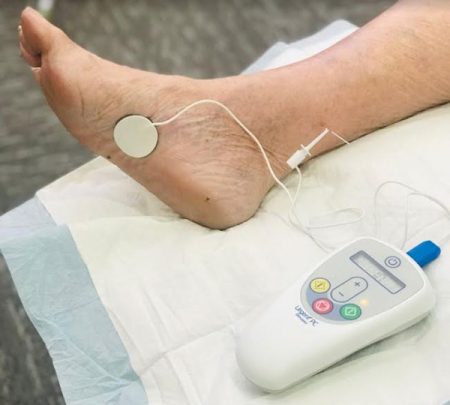
Treatment for Overactive Bladder Syndrome (OAB) ranges from lifestyle intervention, pelvic floor physiotherapy with bladder retraining, medications right up to surgery. However, one low-risk, minimally invasive treatment that is becoming popular in urogynaecology is Percutaneous Tibial Nerve Stimulation or PTNS.
Patients diagnosed with OAB often note symptoms such as urgency to urinate, accompanied with frequency and nocturia (needing to go to the bathroom frequently at night).
Some patients may not respond to medicines successfully or may have intolerable side-effects with pharmacotherapy. Prior to undertaking more invasive treatment, such as Botox injections into the bladder, peripheral nerve stimulation may offer a relatively harmless treatment alternative.
Mild electrical pulses travel through a slim acupuncture-type needle placed near the nerve at the ankle, known as the tibial nerve. This gentle nerve stimulation, which often feels like a tingling sensation, is believed to be able to gradually change bladder activity.
The treatment is spread over a series of 12 weekly, 30-minute treatments. Patients are urged to track symptom improvement, if any, to ascertain the effectiveness of the therapy.
According to systematic reviews, the treatment has shown to be beneficial, with approximately 60-80% efficacy and a low rate of side-effects.
While improvements vary for each patient, those who have responded well have maintained the results by having occasional ongoing maintenance therapy.
PTNS treatment attracts a full Medicare rebate, where patients are fully reimbursed for the fees. The only out of pocket is for the first consultation session.
If you are interested in the PTNS treatment to manage your OAB symptoms, please speak to Dr Wong at your next appointment.
